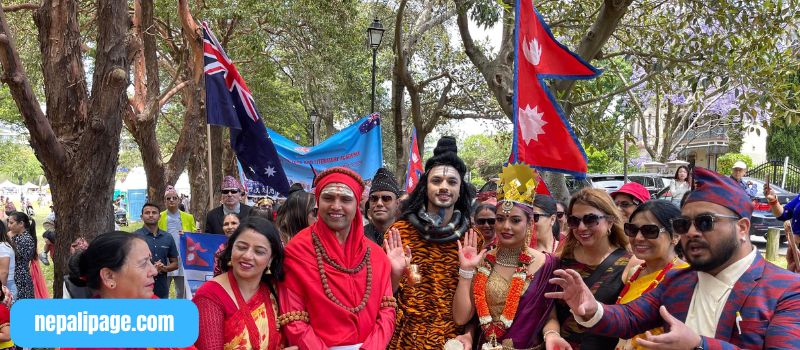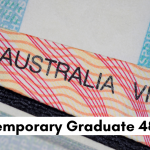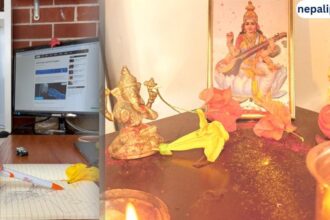Many people in Nepal have huge interest in the job, income, and lifestyle of Nepalese in Australia.
Now, for Nepalese, Australia is the eighth state, Nepalese are in majority in a handful Australian suburbs. Even interestingly, in many Sydney, Melbourne, Adelaide VET colleges Nepalese are almost 100% of total students in many popular courses. Flexible documentation and cheaper college options with full time work rights attracted Nepalese students to study in Australia. Not only students, many skilled migrants from Nepal get settled in Australia through a permanent migration visa.
Australia has become one of the most-loved destinations for Nepalese in terms of foreign studies and extended stays. Records reveal that after 2015, the number of people coming from Nepal to Australia increased. The latest Census of Australia( 2021) reported 133,068 as the Nepalese population in Australia. The most common ancestry of Nepalese in Australia is Nepal, i.e. 91.6%( 121,859). As per Australian Bureau of Statistics,129,870 Nepalese−born people are living in Australia. Among these people, 83.7 % follow Hinduism, and 8.5% follow Buddhism.
Living in Australia has certainly changed their lifestyle while uplifting their economic status. In this blog, we will look into details of various socioeconomic factors of Nepalese living in Australia.
Australian Suburbs Where Nepalese Live
Most Nepalese prefer living in an area that is affordable, has all basic facilities, a well-connected community, and peacefulness. This is why they opt for living in the suburbs. The top 10 suburbs preferred by Nepalese to live in Australia are Auburn (NSW), Hurstville (NSW), Strathfield (NSW), Rockdale (NSW), Campsie (NSW), Granville (NSW), Kogarah (NSW), Glenroy(VIC), Parramatta (NSW), and Ashfield (NSW) respectively.
Most international students and temporary visa holders prefer to live close to the city. Those with permanent residency and got Australian citizenship already prefer to live a bit far from city hustle and bustle. As they can comfortably own a house on those suburbs.
[ Read More: 10 Australian Suburbs, Nepalese Live in Australia]

What is the Education Level of Nepalese in Australia
There is no denying that Australia is the first choice of Nepali students when it comes to studying abroad. And, many Nepalese settled in Australia got their permanent residency through general skilled migration, so most of them are academically good people. Bachelor’s degree, Postgraduate degree, Advanced diploma and diploma are the top 3 levels of education Nepalese living in Australia have. They mostly prefer to study in Tertiary and Primary education. Accounting, General Nursing, Information Technology, Business and Management, and Hospitality are ranked as the Top 5 fields of study for Nepalese students after Year 12 as per the 2021 Australian census.
Job and Income: How Much Nepalese Earn in Australia
Many Nepalese living in Nepal have a preconception that Nepali in Australia can not get professional jobs, and they just work in restaurants, do the dishes. That’s not the complete picture, though it is a partially right assumption.
The median age of Nepalese in Australia is 25 to 29, where 22.3% are male and 27.9% are female, the Australian census recorded.
The labour force status shows that 69.3% of Nepalese are employed with the Top 5 jobs in Nursing Support and Personal Care Workers (7.6%), Registered Nurses (6.3%), Aged and Disabled Carers (5.6%), Commercial Cleaners (5.3%), and Chefs (4.9%). Of those working Nepalese, 16.9% have a personal income of $41.6K to $52K, while 14.6 % have an income of $52K to $65K. In terms of working hours, in Australia generally full time hours count as 38 hours in a week. 18% of employed Nepalese are found to be working 35 to 39 hours a week, while 16.3% work 20 to 29 hours a week.
[Read Also: Things to know before joining Aged Care Training]

Nepalese Family and relationships in Australia
We have a general assumption that Nepalese students come to Australia with a dependent. It’s on the news by mainstream Australian media too. Many Nepalese international students bring their wife or girlfriend as a dependent, so the student couple can manage income and cash flow while studying. Census recorded the similar family and relationship structure.
47.8% of Nepalese staying in Australia are found using “Married” as marital status, while 36.1% have the “Unmarried” status. Of most Nepali families, 92.4% of families are made of heterosexual couples. The family size of 2 is the largest i.e. 45.9%, while 27.4% have 3 members in their family.
Further, 47.1 % of couples reported no children, while 45.7 had children. 27.1 % of Nepalese families are found with 1 child, while 18.9% with 2 children.
How many Nepalese has their own house in Australia
In the last couple of years Nepalese are top buyers for properties in Australia. Number of Nepalese homeowners is increasing in each Australian state. Mushrooming number of Nepalese RealEstate Agents and Nepalese Mortgage Brokers indicates there is huge activity in the Nepalese community regarding home buying. The census shows there are still big opportunities for them as 65.5% of Nepalese in Australia live in rented places, while 29.9% own property with a mortgage. 49.5% are found to be using flats and apartments, while 49.5% have a house for accommodation.
Talking about the rental cost per week, 11% of the rental cost is between $350 to $374, followed by 10.3% for rent of $400 to $424. Only 0.3% of Nepalese are found paying $950 and above, which means that only a few can afford rentals at expensive places. Rental costs are comparatively higher in Australia; hence, it is obvious to generate stress; however, with good income, 80.5% don’t feel any rent stress, while 11.5% are stressed about timely rent payments.
Wrapping Up
These numbers, in terms of place of living, education, job and income, family and relationships, and households, show that Nepalese residing in Australia for various reasons are doing quite well. Among them some are well performing in terms of job, leadership, business success as well as community service.











